Pepper is the main crop in Vietnam, but it often suffers from slow-dying diseases that cause serious damage. Learn information about the causes, symptoms and effective prevention measures for this disease.
Pepper is a key crop in Vietnam’s agricultural sector, providing a significant source of income for many farmers. However, pepper plants are frequently afflicted by various diseases, among which slow wilt is one of the most severe, causing substantial damage to pepper plantations. This article by Sataka will help you better understand the causes, symptoms, and effective prevention measures for slow wilt disease in pepper plants.
Slow wilt disease in pepper plants is caused by a fungus known as Phytophthora. This common and dangerous fungus significantly impacts the health of pepper plants. Phytophthora thrives in wet conditions, particularly during the rainy season, when high humidity creates an ideal environment for the fungus to grow and spread.
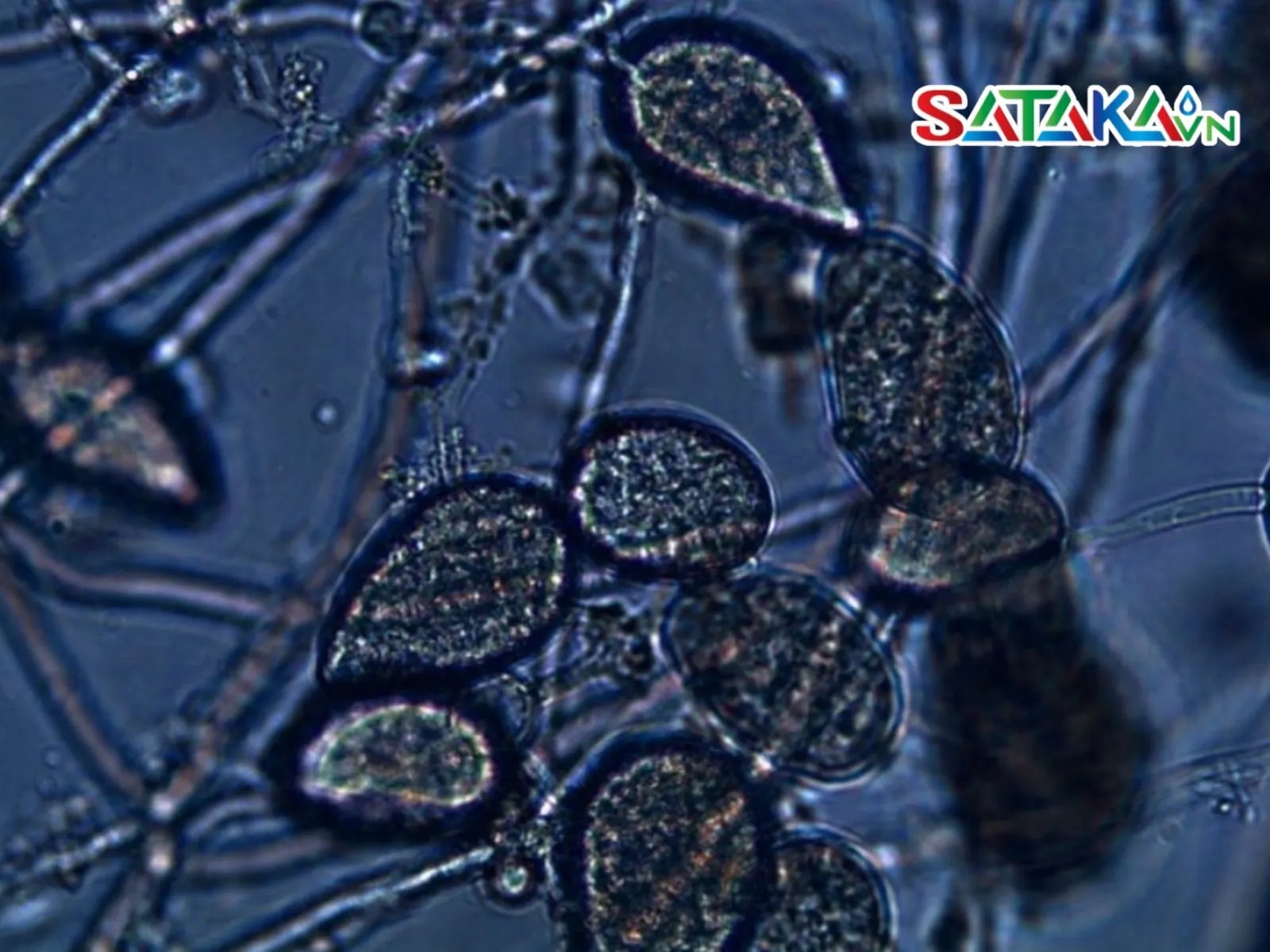
Phytophthora fungus
Additionally, poor drainage conditions play a crucial role in the outbreak of the disease. When the soil cannot drain well, plants are prone to waterlogging and weakening, creating opportunities for the fungus to invade and attack. Particularly in clay-rich farming areas or those without proper drainage measures, pepper plants face a much higher risk of contracting the disease.
Moreover, improper care, such as insufficient nutrition or excessive use of chemical fertilizers, can weaken the plant’s resistance, making it more susceptible to the disease.
Early detection of slow wilt symptoms is critical for timely intervention. Below are some characteristic signs to watch for:
The initial symptoms often start at the top of the plant and gradually spread downward. Initially, the leaves turn pale yellow and then gradually fall off. Without intervention, the plant will lose its leaves entirely and become bare.
One of the most noticeable signs is root rot. Roots affected by the disease often appear black, with the bark easily peeling off and becoming soft and weak. On inspection, you may notice sections of the root that are rotten and unable to absorb water and nutrients from the soil, causing the plant to weaken further.
In the later stages of the disease, the stems begin to show signs of rot. The bark may crack, and the base of the stem often becomes soft and blackened, rotting from the bottom upward.
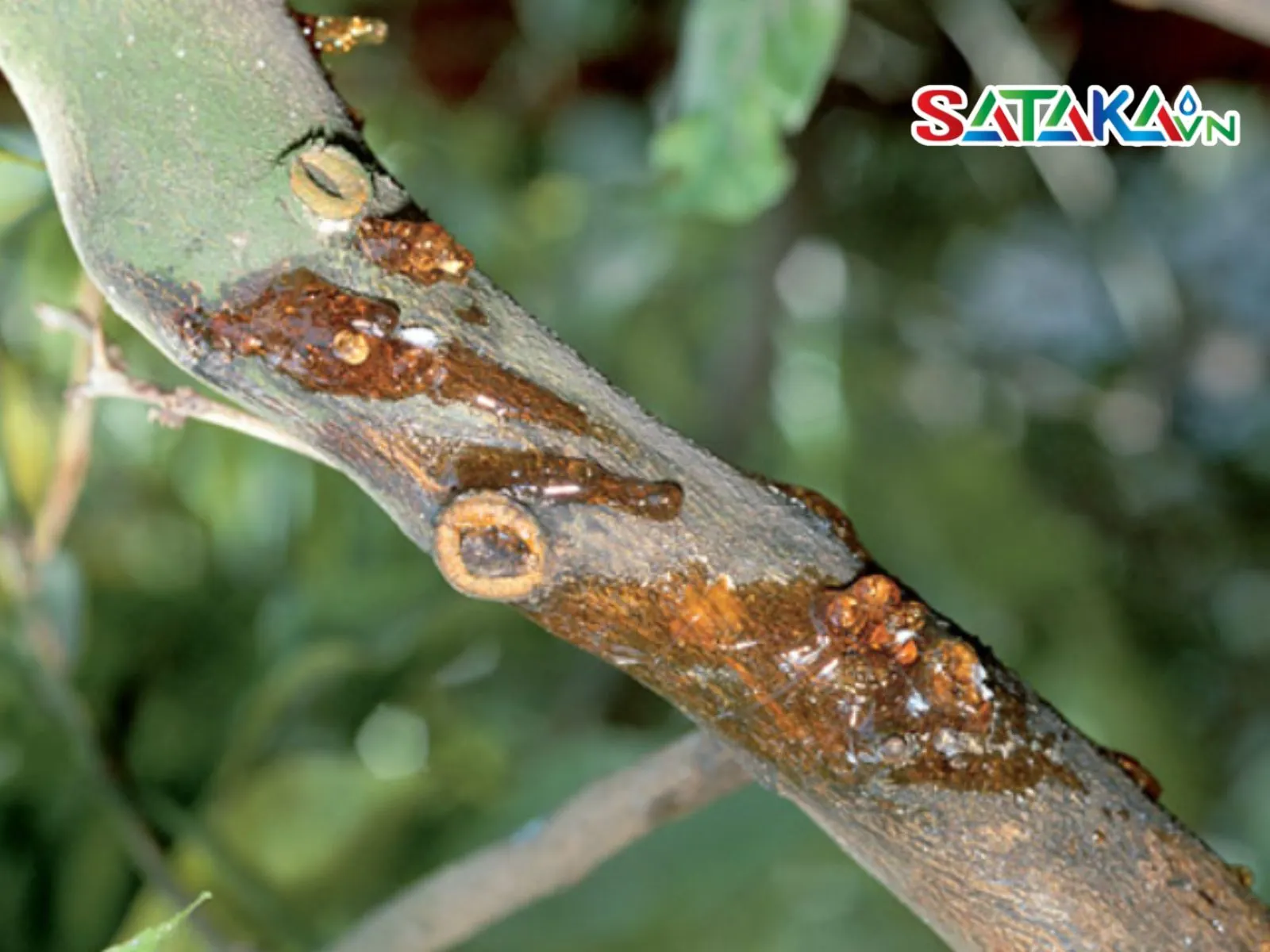
The tree trunk appears rotten
Slow wilt disease not only affects the growth of individual plants but can also spread rapidly across a pepper plantation if not effectively controlled. When plants are infected, yields decrease significantly, and without timely intervention, the plants will gradually die, resulting in substantial economic losses.
In addition to reducing yield, slow wilt weakens the overall health of the plantation. Diseased plants not only lead to crop failure but also create opportunities for other pests and diseases to attack. This necessitates the use of additional pesticides and fertilizers, increasing farming costs.
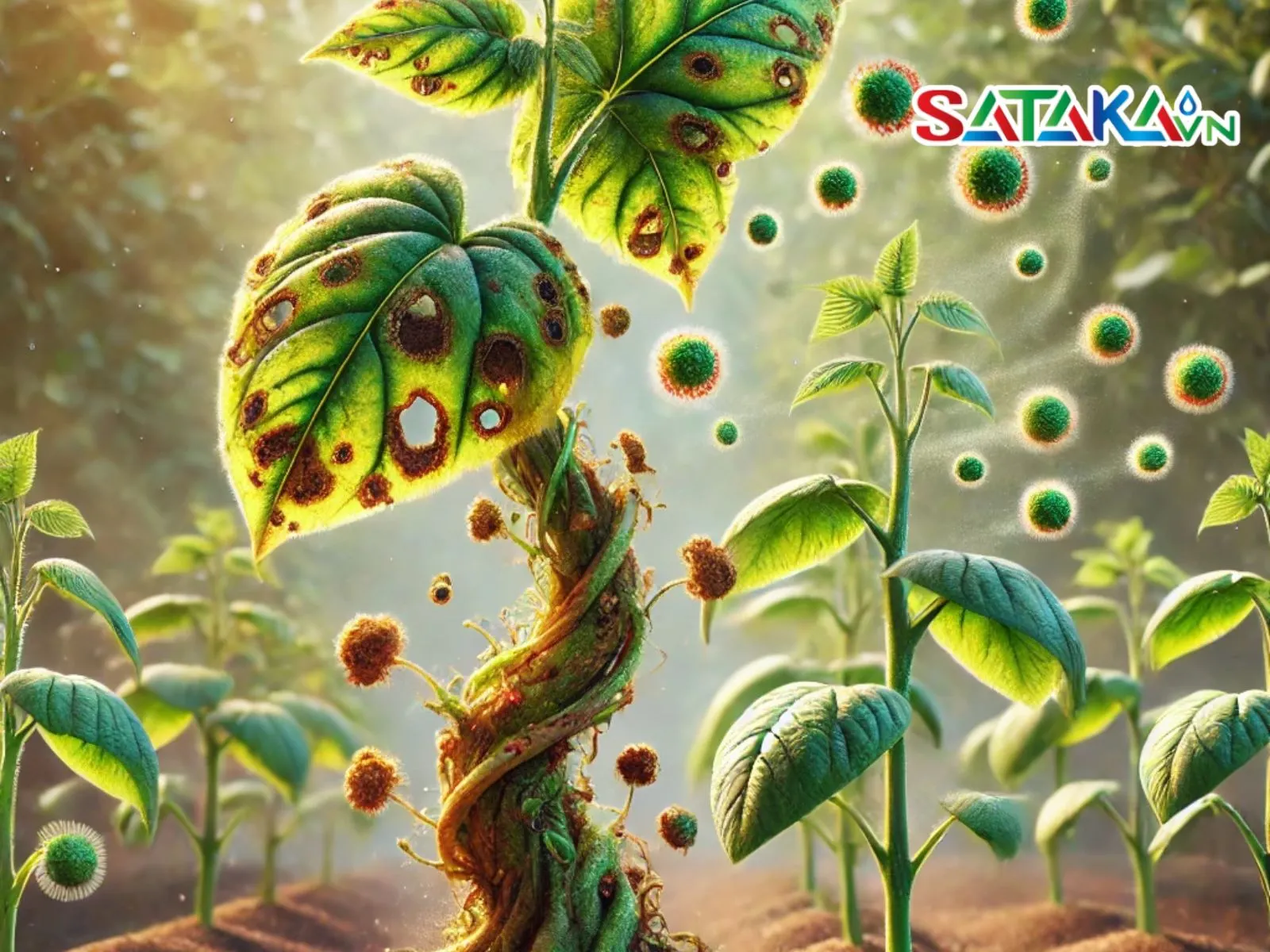
Slow death disease on pepper plants spreads quickly to other plants
Preventing slow wilt is essential to protect pepper plantations and ensure stable yields. Below are some effective prevention methods you can consider:
To reduce the risk of disease, farmers should select pepper varieties with good resistance to diseases. Several pepper varieties have been bred to resist Phytophthora, helping to minimize the risk of slow wilt disease.
Soil conditions play a crucial role in disease prevention. Pepper plants require well-draining soil with an appropriate pH level. If the soil is too wet or lacks drainage, you should improve it by adding organic fertilizers or constructing effective drainage systems.
Watering is a critical factor, especially during the rainy season. Avoid overwatering pepper plants during heavy rain as a preventive measure. Additionally, regularly inspect the drainage system in the plantation to ensure no waterlogging occurs.
If pepper plants are already infected with slow wilt disease, timely and proper intervention is essential to prevent the disease from spreading across the plantation. Below are some effective treatment measures:
When the disease is detected, you can use fungicides containing active ingredients such as Metalaxyl or Mancozeb to eliminate Phytophthora. However, it is crucial to follow the recommended dosage and application schedule to ensure effectiveness and safety for the plants.
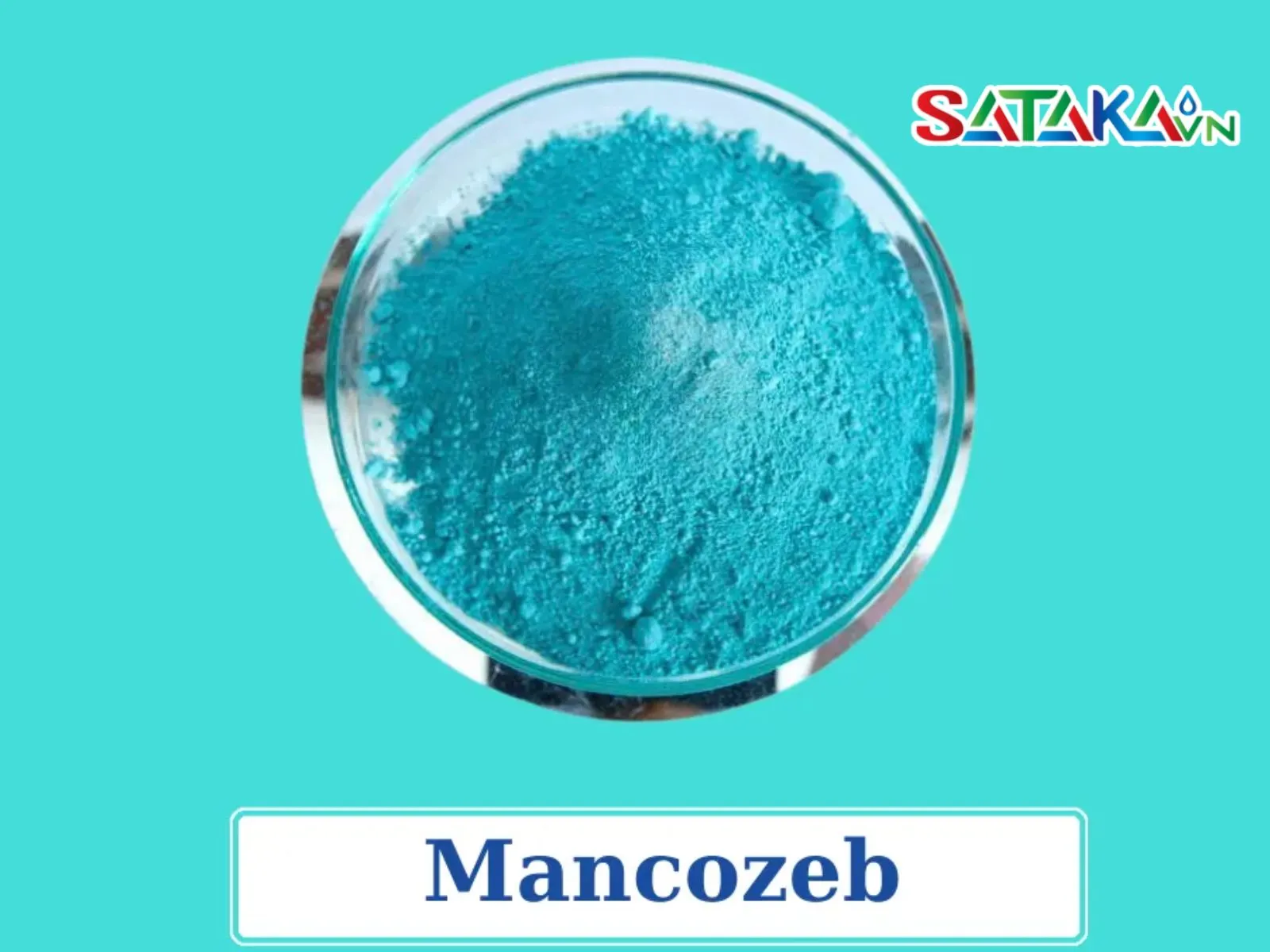
Use the fungicide Mancozeb
Another important measure is pruning and removing infected parts of the plant. This helps prevent the disease from spreading to healthy plants nearby. When pruning, ensure that the diseased parts are either burned or deeply buried to completely destroy the source of infection.
Adding organic fertilizers is an effective way to strengthen the resistance of pepper plants. Organic fertilizers not only help plants absorb nutrients but also improve soil structure, making the plants healthier and more resilient against diseases.
The rainy season is when slow wilt disease develops most actively, so farmers need to implement effective plantation management measures during this period.
Inspect and maintain the drainage system in the pepper plantation to avoid waterlogging. During the rainy season, using organic fertilizers not only provides nutrition but also improves soil and plant health, reducing the risk of disease.
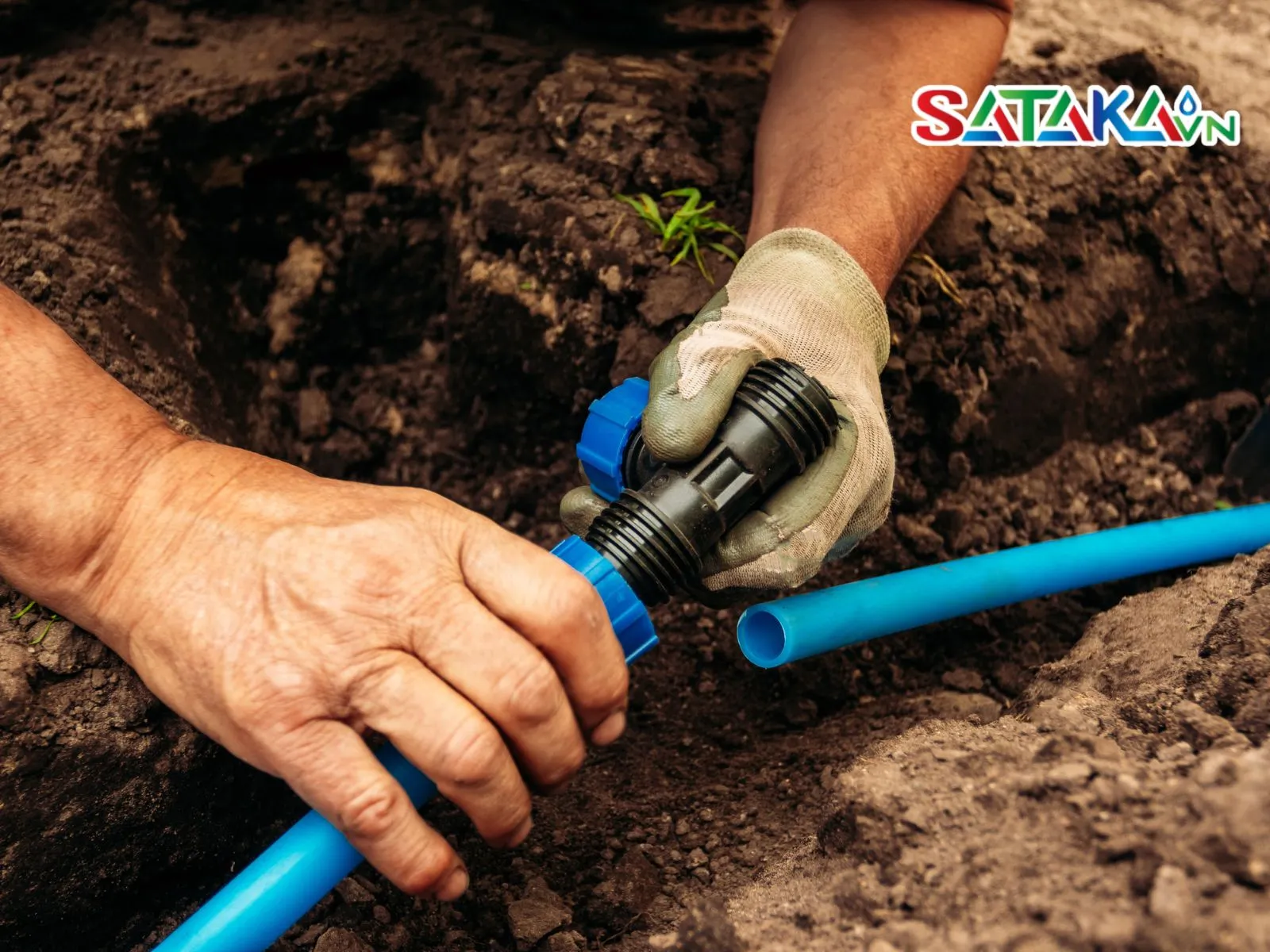
Check the drainage system for the pepper garden
Slow wilt disease in pepper plants is a major threat to the yield and health of pepper plantations. This article by Sataka not only provides detailed information about slow wilt disease but also offers practical and useful solutions for pepper growers to combat this disease effectively.